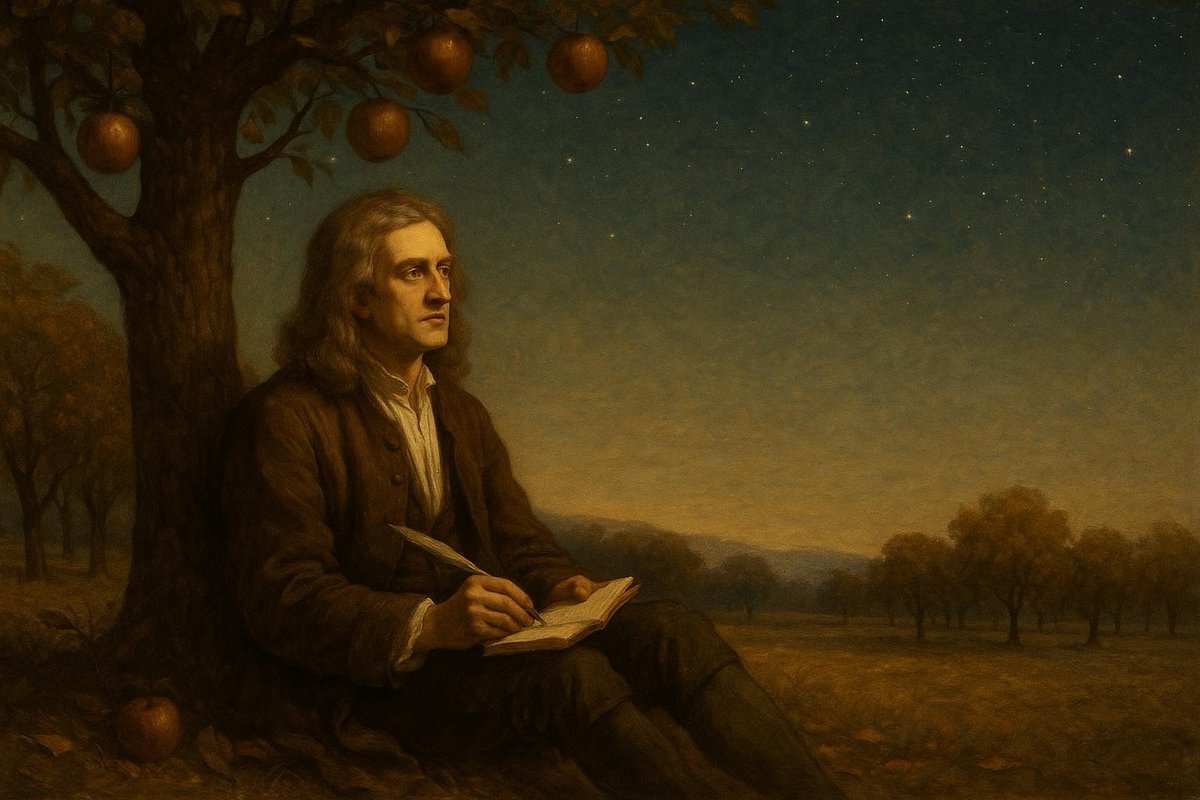
Unpacking the Question: Why Did the Apple Fall?
We often ask, “Why do things fall?” At first glance, it seems simple: gravity pulls them down. But here’s where Isaac Newton’s curiosity kicked in. He didn’t just wonder why the apple fell; he pondered why it fell straight down and not sideways or upward. What unseen force compelled it to settle on the ground?
- Newton speculated about an invisible force acting at a distance, unlike anything known before.
- He questioned whether the same force affecting the apple also kept the Moon circling Earth.
Before Newton, many people believed celestial bodies moved due to divine guidance or innate properties, but these ideas lacked the mathematical rigor to predict motion accurately. Newton’s insights dramatically shifted this viewpoint, enabling us to understand the universe in a new light.
What made Newton’s approach unique was his relentless pursuit of mathematical explanations. He sought not just to describe motion but to quantify it, laying the groundwork for classical mechanics. As time went on, his theories became the foundation upon which modern physics was built, answering questions humanity had pondered for millennia.
Surprising Facts: The Moon, the Apple, and Beyond
Interestingly, Newton’s revelation about gravity wasn’t just a eureka moment inspired by a single apple’s fall. He connected dots from various observations and thought experiments. This connection between the apple and the Moon was central to his insight.
- Newton realized the force that pulled the apple was the same that kept the Moon in orbit.
- He calculated the gravitational pull using the inverse square law, showing how force diminishes with distance.
Before Newton, celestial movements seemed like a divine mystery. However, his work demystified these movements, showing them as predictable and understandable phenomena that followed natural laws. According to Professor Richard Westfall, “Newton unified the heavens and the earth in a single theory.”
Newton’s insights extended beyond Earth, influencing how we perceive our entire solar system. His laws enabled us to calculate planetary positions, predict eclipses, and even navigate the stars. The realization that the same principles governing an apple’s fall also dictated planetary orbits was revolutionary, and it’s no wonder that this discovery has had a lasting impact on science.
What Science Says: The Law of Universal Gravitation
The law of universal gravitation states that every point mass attracts every other point mass with a force directly proportional to the product of their masses and inversely proportional to the square of the distance between their centers. A mouthful, yes, but its implications are profound.
- Newton’s law explained the elliptical orbits of planets, as observed by Johannes Kepler.
- It provided a mathematical framework to describe gravitational interactions accurately.
Before Newton’s time, people like Aristotle believed heavier objects fell faster. Galileo’s experiments debunked this, showing that all objects fall at the same rate regardless of mass, paving the way for Newton’s breakthroughs.
Newton’s genius lay in his ability to synthesize previous discoveries into a coherent theory. His law showed that gravity wasn’t just a force experienced on Earth but a universal one. This was a monumental leap, as it united celestial and terrestrial physics under a single theoretical umbrella.
Newton’s theories have stood the test of time, still serving as a cornerstone of physics education worldwide, and inspiring generations of scientists to build upon his work.
What It Means for Us: Beyond the Apple
Newton’s insights did more than just explain physical phenomena; they transformed how we interact with the world. Understanding gravity allows us to launch satellites, predict space missions, and even contemplate interstellar travel.
- His discoveries have practical applications in engineering, astrophysics, and even our daily lives.
- Newton’s work has inspired countless technological advancements and scientific inquiries.
The ripple effects of Newton’s quest for answers continue to shape our reality. His legacy teaches us the value of curiosity and the importance of asking “why” — a question that sparks innovation and discovery.
Newton’s story urges us to look beyond the obvious and explore the hidden forces shaping our world. It invites us to be curious, to challenge assumptions, and to seek understanding, just as he did in his day.
As we stand on the shoulders of this giant, we are reminded that the pursuit of knowledge is a never-ending journey, one that can lead to unimaginable discoveries and new questions waiting to be answered.
Fuel Someone Else’s Curiosity
Hopefully, this exploration of Newton’s life and his revolutionary insights into gravity has sparked your imagination. Share this article with friends, family, or anyone curious about the mysteries of the universe. Encourage them to question, to learn, and to explore the world around them. Let’s keep the spirit of curiosity alive, inspiring the next generation of thinkers and dreamers.

Leave a Reply